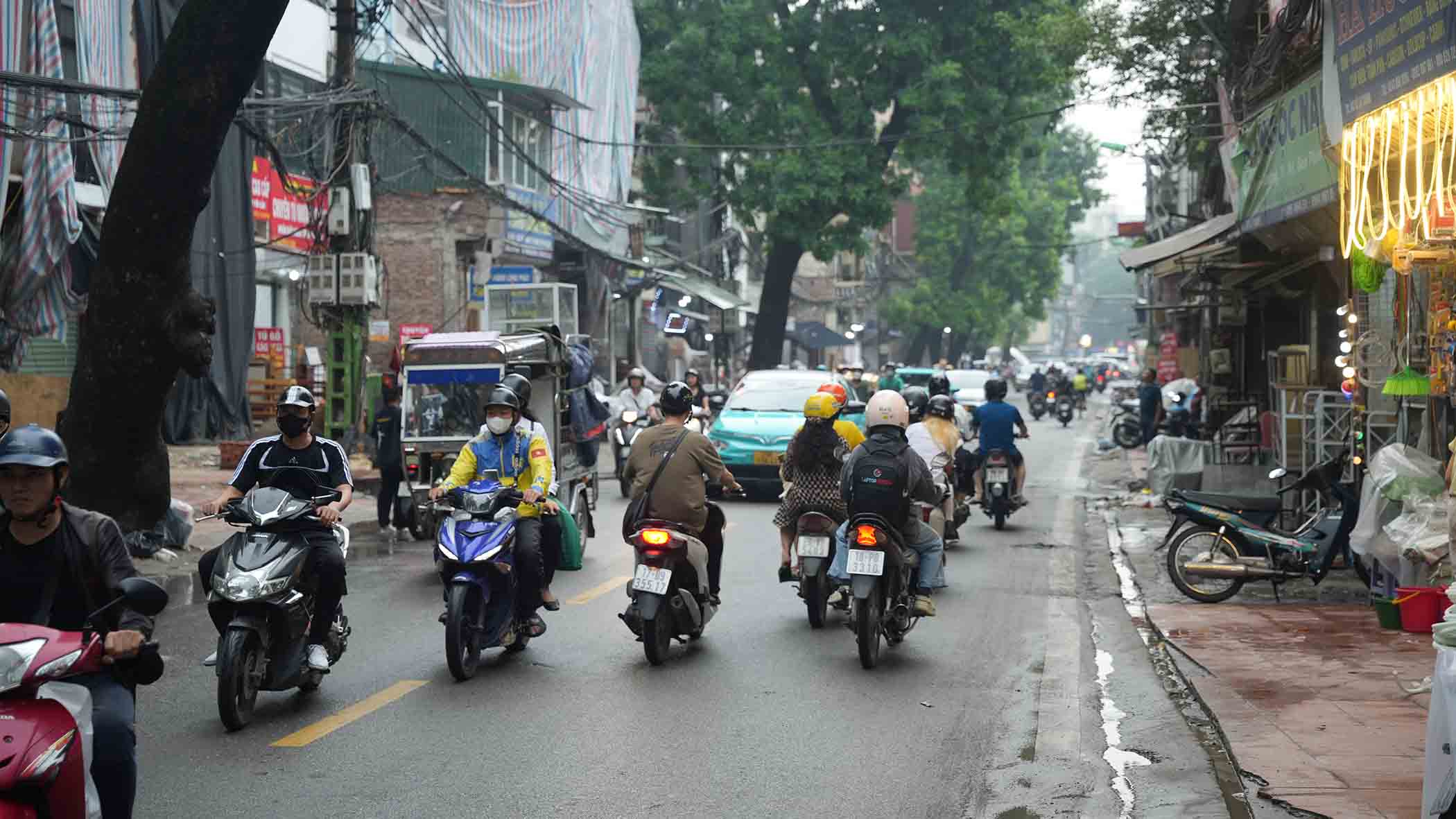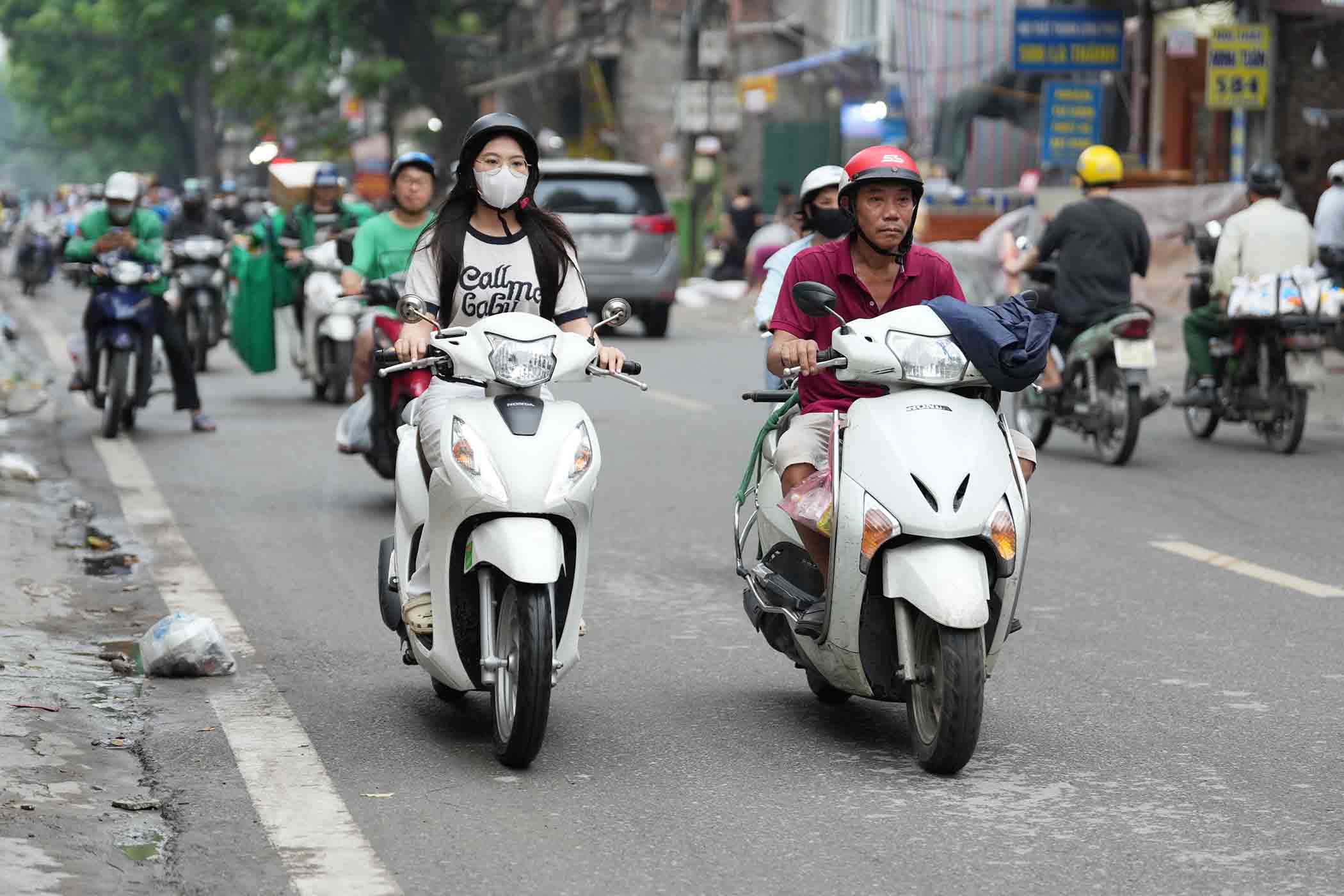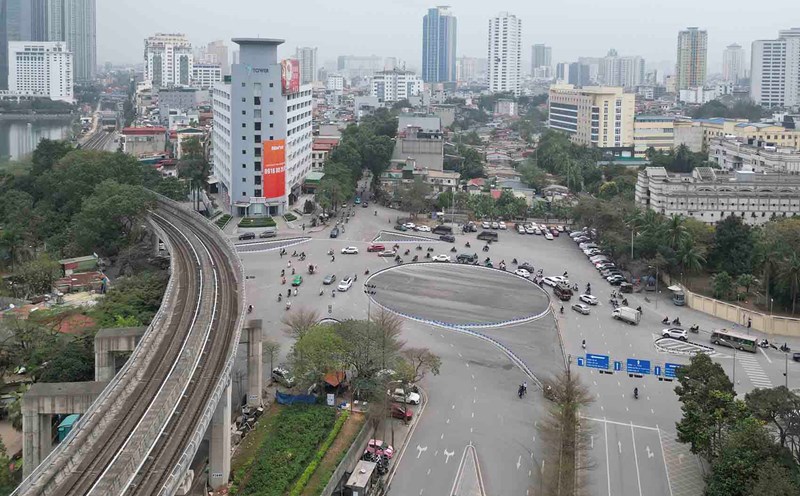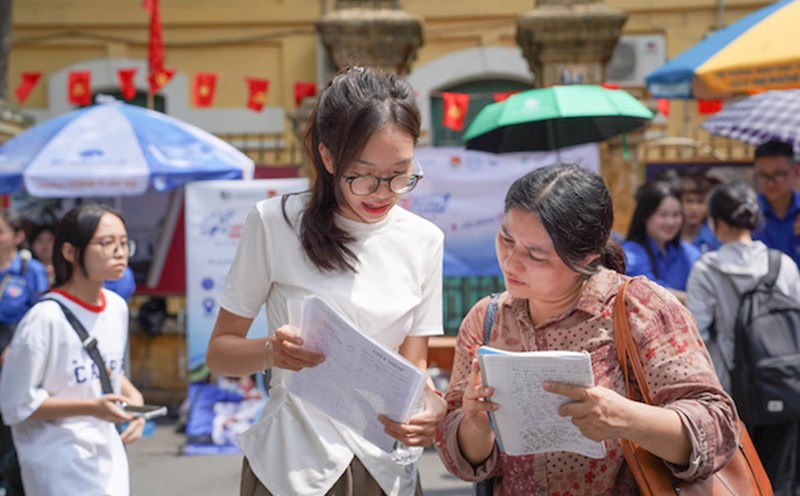Support if there is a clear roadmap
At the request of the Prime Minister, Hanoi must implement solutions to organize and individuals to convert vehicles, ensuring that by July 1, 2026, there will be no more motorbikes and motorbikes using fossil fuels circulating in the Ring Road 1 area.
According to records, this area has a population of more than a million people, along with hundreds of thousands of people from the suburbs and neighboring provinces flocking here every day, the density of personal vehicles is very high.
Mr. Nguyen Van Cuong (54 years old, owner of a mechanical shop on De La Thanh street) said that the policy of limiting gasoline-powered motorbikes is necessary in the context of serious air pollution in Hanoi.
Supporting the state's policies and guidelines, Mr. Cuong said that abandoning gasoline motorbikes is not simple.
"My current car is a means of livelihood, transporting goods, traveling through alleys. Electric vehicles are currently underloaded, and their battery life is limited. If we convert, the State needs to support costs and have a clear incentive mechanism" - Mr. Cuong said.

Sharing the same view, Ms. Le Thi Thu (38 years old, selling fruit at the temporary market in O Cho Dua) said that her customers are mainly people around the area who ride motorbikes to buy quickly.
"If gasoline motorbikes are not allowed to enter Ring Road 1, the number of visitors may decrease. I also don't know how to replace the car because the price of good quality electric cars is still high. Hopefully the City will have a policy to exchange old cars for electric cars with appropriate support levels, and at the same time upgrade charging stations in markets and residential areas so that people can use them with peace of mind" - Ms. Thu said.
Talking to reporters of Lao Dong Newspaper, many people said that the goal of "greening" traffic is an inevitable trend but it is necessary to consider the adaptability of workers and traders - a vulnerable group when converting vehicles.
They expect Hanoi to not only have a specific roadmap, but also organize communication, technical consultation, financial support and develop synchronous charging infrastructure.
No one opposes environmental employment, but how should we do so that people are not left behind, said Mr. Le Xuan Hung (Ba Dinh Ward, Hanoi).
Hanoi will support vehicle exchange
At the seminar "Determination to protect the environment and protect the health of the people of the capital" organized by the Government Portal on the afternoon of July 15, Vice Chairman of the Hanoi People's Committee Duong Duc Tuan said that the city currently has about 8 million private vehicles, including 1.1 million cars and 6.9 million motorbikes.
In Ring Road 1, there are about 450,000 vehicles, a population of 600,000 people, mainly vehicles using gasoline.
This is one of the causes of air pollution, with 70% being used vehicles.
Therefore, Mr. Tuan believes that implementing the Prime Minister's Directive 20 from July 1, 2026 to no motorbikes or mopeds using fossil fuels circulating in Ring Road 1 is necessary, urgent and an inevitable trend.

To strictly implement the Prime Minister's direction, Mr. Duong Duc Tuan said that Hanoi will deploy support for people to convert petroleum-using vehicles to green fuel, first of all applied to people in the Ring Road 1 area, expanded in the Ring Road 2 area.
At the same time, it calls on vehicle suppliers to offer the most preferential policies when converting vehicles, supporting prices... Supporting 100% of registration and registration fees... for electric vehicles; standardizing and re-planning the charging station system, using public investment capital.
In addition, to ensure the safety of users, the city will also have solutions related to the use of electric vehicle batteries, fire prevention and fighting with infrastructure and standards, synchronous and modern regulations; have vehicle battery exchange stations with the participation of many companies, avoiding monopoly.
In parallel with the roadmap for converting personal vehicles, the city also promotes the development of green transport infrastructure, to meet the travel needs of people in the Ring Road 1 area. Accordingly, Hanoi plans to increase inner-city transit vehicles such as small electric buses (8-12 seats) and 4-seat electric cars.
Regarding urban railways, the Cat Linh - Ha Dong and Nhon - Hanoi Railway Station routes have been connected to the Ring Road 1 area. The city continues to speed up the progress of the West Lake - Hoa Lac and Nam Thang Long - Tran Hung Dao routes.











